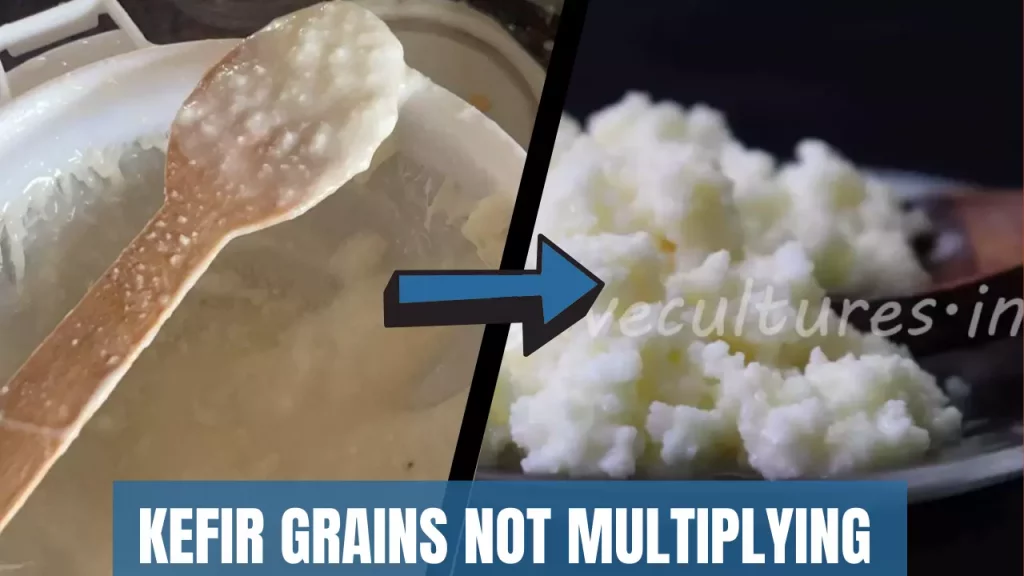The growth of kefir grains usually depends on the environment, climatic conditions, room temperature, quality of milk, hygiene, etc. Usually kefir grains take 6-8 weeks for rehydration and then begin multiplying. There are various reasons why kefir grains stop multiplying and there are times where due to harsh reasons they even disappear. One of the benefits of using milk kefir grains to make healthy Kefir drinks is that if carefully looked after they can multiply, giving you healthy drinks for lift. In order to multiply rapidly they should be handled with care and nurtured properly. Once you are successfully multiplying the grains, do note that you will need more food for them as they grow in order to consume them in a healthy way.
Kefir grains (milk or any other) should be provided with proper nutrition along with a hospitable environment to live in order for them to multiply .
The common reason for the milk kefir grains to break down or reduce in size or disappear can be due to stressful conditions like harsh temperature , rough handling, quality of milk or malnourishment. This will result in the disappearance of the kefir grains in subsequent batches.you can revive milk kefir grains even when they’ve paused their activity to produce.
Although various steps can be taken to prevent kefir grains to disappear, such as-
- Keeping them at an optimum temperature: the grains should be kept at a soothing temperature between 22° C to 25° C in order to grow well. If the temperature is below 22° C, they may become slacked or stagnant. If you belong to a place with a cold environment, you should keep the jar at the top of the shelves, where it’s supposed to be warm. And if you belong to a place with a higher temperature(above 25C), then you should place the jars in relatively cold rooms.
- The grains should be fed with good quality organic milk. If the dairy milk has residual antibiotics it inhibits the kefir grains growth and slowly disappears. The most effective is cow’s milk. After fermentation, the kefir grains will need a new batch of milk. The increase in the frequency of changing milk makes it more healthy to consume.
- Don’t use soaps or chemicals to wash the utensils or jars. They harm the kefir grains survival or health. Also use hot water to wash the utensils.
- Choose a good jar with a large base. It facilitates each of the grains to rest down and feed on the milk instead of the clumping up at the top of the narrow jar.
- The grain quantity should be small. The dividing of the grains in different jars and providing them with more milk helps them avail the required nutrients.
- Jar should be kept in a well ventilated room for the flow of fresh air and air exit.
These are the major steps to be taken in order to ferment and help multiply the grains. Hope you find your answers here and consume the best quality grains from us.
